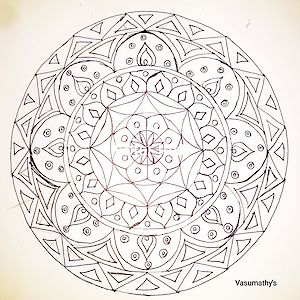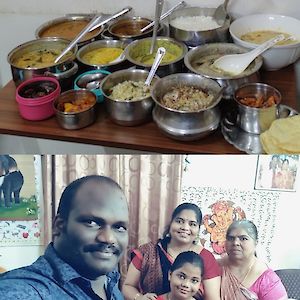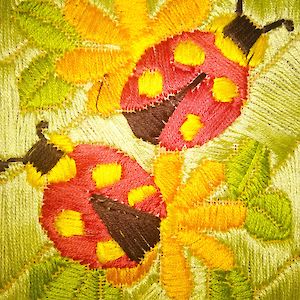Note: The aim of this article is to give an overview about this vaccine to generate awareness among common public as India is going to roll out the vaccine soon
Covishield has been developed by Oxford University in collaboration with pharma major AstraZeneca. India’s Serum Institute is their manufacturing and trial partner. Let’s understand about what are viral vector-based vaccines before discussing about Covishield.
Viral vector-based vaccines differ from most conventional vaccines. They don’t contain antigens (substances derived from pathogens that can cause an immune response in the body), but rather use the host cells to produce them. This is done by using a modified virus (the vector) to deliver genetic code for antigen into human cells. This vector infects the human cells and instruct them to produce large amounts of antigen which in turn triggers an immune response in the body. Thus, vaccine mimics a natural infection. This has the advantage of triggering a strong cellular immune response by T cells as well the production of antibodies by B cells.
What happens in natural infection?
Viruses survive and replicate by invading their host’s cells and hijacking their protein-making machinery. Thus, the host’s machinery reads the genetic code of virus and makes new viruses. These virus particles contain antigens, molecules that can trigger an immune response.
How viral vector vaccine mimics natural infection?
In case of Viral vector vaccine, the host cells only receive code to make antigens i.e. the viral vector acts as a delivery system, providing a means to invade the cell and insert the code for a different virus antigen (the pathogen you’re trying to vaccinate against). The virus itself is harmless, and by getting the cells to produce antigens alone the body can mount an immune response safely, without developing disease.
Which viruses are used as vectors and how?
Adenovirus (a cause of the common cold), measles virus and vaccinia virus are some of the viruses which are used as vectors. These vectors are stripped of any disease-causing genes and sometimes also genes that can enable them to replicate. So, they are now safe and harmless. The genetic instructions for making the antigen from the target pathogen are introduced into the virus vector’s genome.
Types of Viral vector-based vaccines:
There are two main types of viral vector-based vaccines.
- Non-replicating vector vaccines: Unable to make new viral particles; Only produce the antigen to generate immune response;
- Replicating Vector vaccines: Produce new viral particles in the cells they infect, which then go on to infect new cells that will also make the antigen.
COVID-19 viral vector vaccines under development use non-replicating viral vectors.
Covishield – Replicating or non-replicating?
Covishield uses a non-replicating chimpanzee viral vector based on a weakened version of a common cold virus (adenovirus) that causes infections in chimpanzees and contains the genetic material of the SARS-CoV-2 virus spike protein. After vaccination, the surface spike protein is produced in the human body without any impact of the actual COVID-19 disease, enabling the immune system to attack the SARS-CoV-2 virus if it infects the body in future. The viral particles do not replicate in our body.
Safety and Efficacy:
The Oxford-AstraZeneca COVID-19 vaccine is proven to be safe with no major side-effects reported throughout the human trials. It is shown to generate strong antibody and T-cells response for long-term immunity against the novel coronavirus SARS-CoV-2. As per The Drug Controller General of India, The Serum Institute of India submitted data of phase 1 clinical trial conducted over 23,745 overseas participants showing an overall result of 70.42 per cent efficacy. In phase two and three, which were conducted in India, 1,600 participants took part and the results were comparable to that of the first phase of trial.
Who will get first?
- Healthcare workers: Public and private: The vaccine will first be given to healthcare workers working in both government and private hospitals, according to the recommendation by the National Expert Group on Vaccine Administration for COVID-19 (NEGVAC). They have further been divided into sub-categories - frontline health and Integrated Child Development Services (ICDS) workers, nurses and supervisors, medical officers, paramedical staff, support staff and students.
- Frontline and municipal workers: Frontline workers associated with the state and central Police department, armed forces, home guard, disaster management and civil defense organisation, prison staff, municipal workers and revenue officials engaged in COVID-19 containment, surveillance and associated activities are next in line to get the vaccine. Workers associated with state government and ministries of defense, home, housing and urban affairs will also be inoculated in this phase.
- Population above 50 years of age: This group is further divided into two sub-categories: Above 60 and 50-60 years of age.
- Areas with high COVID-19 infection
- Remaining population
How can you register for the vaccine?
Self-registration module will be made available in the later phases of the implementation.
Procedure will be:
- Self-register on the CoWIN Website.
- Upload government photo identity or do an AADHAAR authentication. The authentication can happen via biometrics, OTP or demographic.
- Once registered, a date and time will be allocated for vaccination
There will be no on the spot registration and only pre-registered beneficiaries will be allowed to proceed for the vaccination. Respective district administration will be responsible for the session management in the CoWIN system. They will approve the beneficiaries for session and site allocation. CoWIN will have an inbuilt monitoring and reporting mechanism.
Where will you get vaccinated?
Vaccine sites have been allocated for different priority groups:
Fixed session site: Vaccination conducted at the health facilities - both government and private - where either a medical officer or a doctor is available is defined as a fixed session site.
Outreach session site: Sites other than health facilities such as schools, community halls etc.
Special mobile teams: This is for remote, hard-to-reach areas, migratory populations areas and international borders areas. District administrations need to plan these teams as part of the operational plan.
What will the vaccination process entail?
There will be three demarcated rooms and areas for the vaccination process:
- Waiting room - where one will wait before the vaccine is administered;
- Vaccination room - where the vaccine will be administered
- Observation room where the beneficiary will be observed for 30 minutes post receiving the vaccine.
Who will give the vaccine?
A five-member vaccination team will be entrusted with the process:
Vaccination officer 1: For pre-checking the registration
Vaccination officer 2: For authentication
Vaccination officer 3: In-charge of giving vaccine. Since it is an intramuscular vaccine, a trained professional will administer the vaccine.
Vaccination officer 4 and 5: In-charge of crowd management and 30-minute observation.
Cost of the vaccine:
India’s Health workers and frontline workers will get the vaccine free of cost, as per clarification given by Union health minister. Covishield will cost around Rs 400, as per statement issued by Serum Institute CEO Adar Poonawalla.







